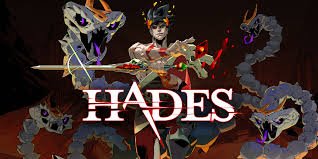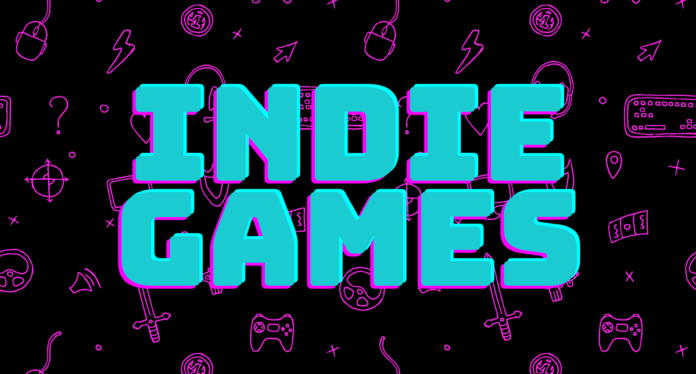In recent years, the gaming landscape has experienced a seismic shift. Once dominated by blockbuster AAA titles, the industry is now witnessing a vibrant revolution led by indie games. Characterized by their creative risk-taking, lower budgets, and innovative gameplay, indie games have become both a cultural phenomenon and a driving force in shaping a new era in gaming. This article dives deep into the rise of indie games, examines the underlying factors behind their success, and explores how independent developers are redefining the future of interactive entertainment.
What Are Indie Games?
Indie games—short for independent video games—are created by individuals or small teams without the direct financial support or oversight of major publishers. This freedom enables developers to experiment with new ideas, art styles, and storytelling techniques that might not find a place in the tightly structured AAA environment. As a result, indie games can offer unique and personalized experiences, often catering to niche audiences and pushing the boundaries of conventional game design.
A Brief History of Indie Game Development
Indie game development has its roots in the early days of home computing. During the 1970s and 1980s, “bedroom coders” created games using accessible programming languages like BASIC. Although many of these early titles were self-distributed and modest in scope, they laid the groundwork for independent creative expression in gaming.
The modern indie movement began to flourish in the early 2000s thanks to:
- Digital Distribution Platforms: Services like Steam, Itch.io, and the Epic Games Store allowed small developers to reach a global audience without relying on physical distribution.
- Crowdfunding and Self-Financing: Platforms such as Kickstarter and Patreon provided critical financial support, enabling projects like Stardew Valley and Undertale to become breakout hits.
- Accessible Development Tools: Game engines such as Unity, Unreal Engine, and GameMaker have democratized game development, lowering the barriers to entry and making it easier for anyone with a passion for gaming to bring their ideas to life.
Key Factors Driving the Rise of Indie Games
Several factors have converged to fuel the surge of indie game development:
1. Creative Freedom and Experimentation
Indie developers are not bound by the strict guidelines and market pressures that often influence AAA studios. This autonomy allows them to take risks and innovate—whether it’s through unique narrative structures, unconventional gameplay mechanics, or striking visual styles.
2. Cost Efficiency and Accessibility
With lower overhead and the use of affordable development tools, indie projects can be executed on a fraction of the budget required by large studios. This cost efficiency makes it feasible for small teams or solo developers to experiment and iterate without the fear of losing a massive investment.
3. Digital Distribution and Social Media
The rise of digital storefronts has redefined how games are marketed and sold. Indie games benefit from a global marketplace where success is driven by word of mouth, viral marketing, and community engagement. Social media platforms play a crucial role in promoting indie titles, often turning small releases into cultural sensations.
4. Changing Consumer Preferences
Modern gamers increasingly seek experiences that emphasize originality and emotional depth. Unlike the often formulaic narratives of big-budget games, indie games provide intimate, focused experiences that resonate deeply with players. This shift in consumer taste has led to a growing appetite for indie titles that dare to be different.
Success Stories in Indie Gaming
The past decade is littered with inspiring success stories that exemplify the indie revolution:
- Stardew Valley: Developed almost entirely by one person, this farming simulation game captivated millions with its engaging gameplay, charming pixel art, and nostalgic appeal.
- Undertale: With its quirky humor, unique combat system, and the ability to shape the story based on player choices, Undertale became a cultural phenomenon and redefined narrative-driven gaming.
- Celeste: Combining challenging platforming mechanics with a touching story about personal growth, Celeste garnered critical acclaim and deep emotional connections from players.
- Hades: Blending roguelike mechanics with rich mythological storytelling, Hades not only won numerous awards but also broke records for independent developers in sales and player engagement.
- Hotline Miami: Known for its fast-paced action, retro aesthetics, and atmospheric soundtrack, Hotline Miami influenced a whole generation of indie developers and remains a beloved title in its genre.
These games—along with many others—demonstrate that innovation and authenticity are driving forces behind indie success.
The Impact of Indie Games on the Gaming Industry
Diversifying the Market
Indie games have democratized the gaming industry by introducing a wide range of genres and artistic styles that challenge the homogenized offerings of mainstream titles. This diversification enriches the gaming ecosystem, offering players a more varied and enriched gaming experience.
Influencing AAA Development
Not only have indie games redefined what is possible on a small scale, but their success has also forced AAA developers to re-evaluate their approaches. Many major studios are now incorporating elements of indie design—such as tighter gameplay loops, smaller scope, and more focused storytelling—into their projects.
Economic and Cultural Impact
The rapid growth of digital distribution has allowed indie titles to achieve financial success without massive budgets. This economic model has changed the way games are funded, developed, and marketed. Furthermore, the cultural impact of indie games is profound: they empower diverse voices, encourage community engagement, and foster a sense of shared creative identity among players and developers alike.
Future Outlook: What’s Next for Indie Games?
The future of indie game development looks brighter than ever:
- Emerging Technologies: Advancements in virtual reality (VR), augmented reality (AR), and cloud gaming will open new frontiers for indie developers, offering novel ways to engage players.
- Global Expansion: As digital distribution reaches more regions worldwide. Indie games will continue to attract diverse talent and audiences, further enriching the industry.
- Community-Driven Development: With increasingly sophisticated community feedback tools and platforms for early access. Indie developers can iterate faster and build stronger connections with their fan bases.
- Sustainability and Innovation: The success of indie games has inspired a more sustainable model of development. Focusing on quality over quantity. Which will be critical in an industry often pressured to pursue ever-larger, more expensive projects.
Top 5 Indie Games
1. Stardew Valley
- Developer: ConcernedApe (Eric Barone)
- Release Year: 2016
- Genre & Gameplay: Farming simulation with role-playing and adventure elements
- Key Details:
- Stardew Valley puts players in charge of reviving a dilapidated farm in a small town.
- Its deep systems—covering farming, mining, fishing, and relationship-building—combine with relaxing pixel art aesthetics and extensive mod support.
- The game was developed almost entirely by a single person, which highlights the creative potential and resourcefulness of indie developers.
- Impact:
- It has built a dedicated community and is often praised for its ability to offer a rich, engaging experience that blends strategy with casual play.
- Its success has inspired many aspiring developers to follow a similar do-it-yourself approach.

2. Undertale
- Developer: Toby Fox
- Release Year: 2015
- Genre & Gameplay: Role-playing game (RPG) with unconventional combat mechanics
- Key Details:
- Undertale best known for its innovative approach to combat—offering both violent and non-violent options—and for letting player choices dramatically shape the narrative and outcome.
- Its quirky humor, memorable characters, and minimalist pixel art style contribute to a unique narrative experience that challenges players’ expectations about morality and consequence in gaming.
- Impact:
- The game has attained a cult status, influencing narrative and design approaches in later indie titles and demonstrating that creative storytelling can be as compelling as high-end production values.

3. Celeste
- Developer: Matt Makes Games (led by Matt Thorson)
- Release Year: 2018
- Genre & Gameplay: Platformer with challenging levels and precision control
- Key Details:
- Celeste combines extremely tight and challenging platforming mechanics with a heartfelt narrative about overcoming personal struggles, particularly in the context of mental health.
- The game features beautifully detailed pixel art and a dynamic soundtrack that complements its emotional journey and high gameplay standards.
- Impact:
- It has received widespread acclaim for its design and storytelling, garnering several awards.
- Celeste often cited as a benchmark for how indie games can blend difficult gameplay with meaningful narrative themes.

4. Hades
- Developer: Supergiant Games
- Release Year: 2020
- Genre & Gameplay: Roguelike dungeon crawler with action-packed combat
- Key Details:
- Hades uniquely blends fast-paced rogue-like gameplay with an intricately woven narrative drawn from Greek mythology.
- It features fluid, dynamic combat, polished voice acting, evolving gameplay loops, and high replay value thanks to procedural level design and character progression.
- Impact:
- Game has been praised for its brilliant integration of narrative & gameplay,. Earning numerous accolades and commercial success that redefined what a narrative-driven roguelike can be.
- Its success has encouraged a wave of innovative design in both indie and larger studio games.

5. Hotline Miami
- Developer: Dennaton Games (Jonatan Söderström and Dennis Wedin)
- Release Year: 2012
- Genre & Gameplay: Top-down shooter with fast-paced, brutal action
- Key Details:
- Hotline Miami stands out for its hyper-violent action, retro pixel art aesthetic, and an atmospheric, ambiguous narrative that challenges conventional storytelling in games.
- Known for its quick level restarts and addictive gameplay, it uses a memorable synth-heavy soundtrack that perfectly sets the mood.
- Impact:
- This title has become a seminal work in the indie genre, influencing a vast number of subsequent titles and proving that innovative design can lead to massive cultural impact even on modest budgets.
- Its gritty style and relentless pace continue to inspire both players and developers around the world.

Do you want to known about (Top 10 Open World Games of 2025 Must Play Adventures)

